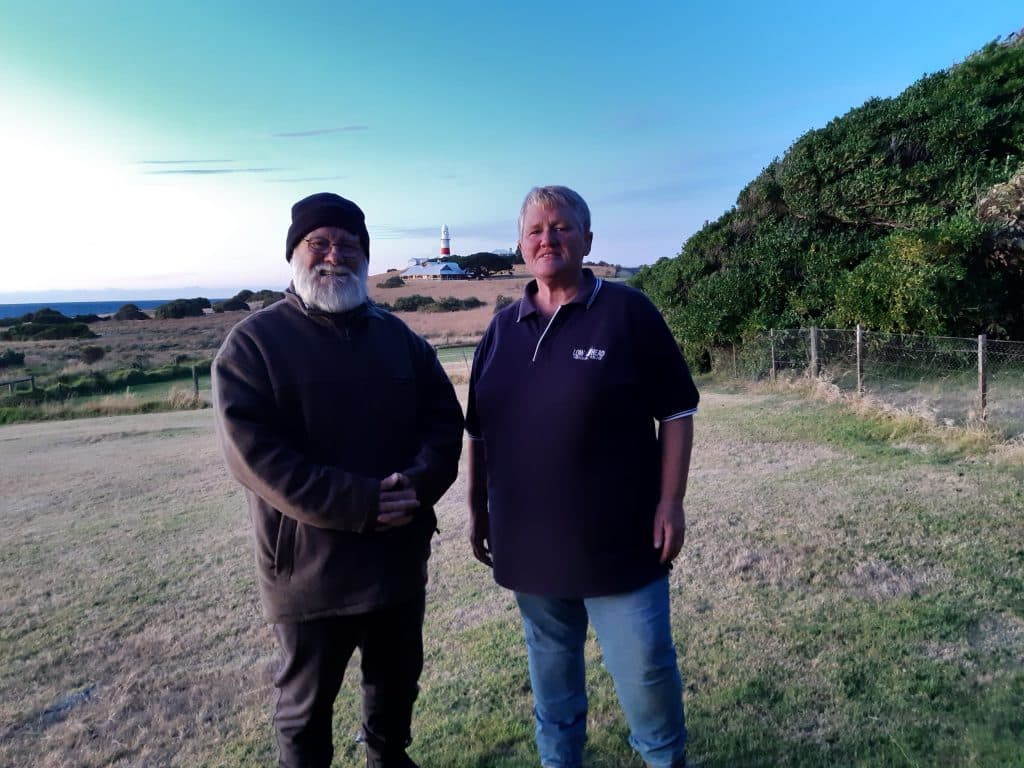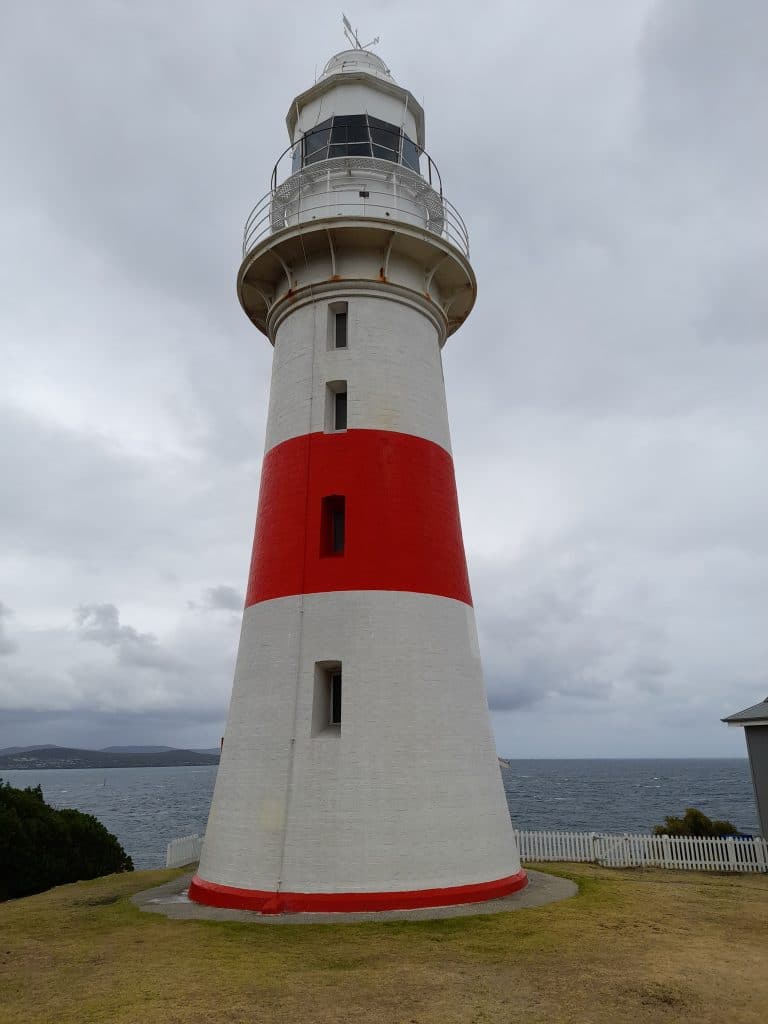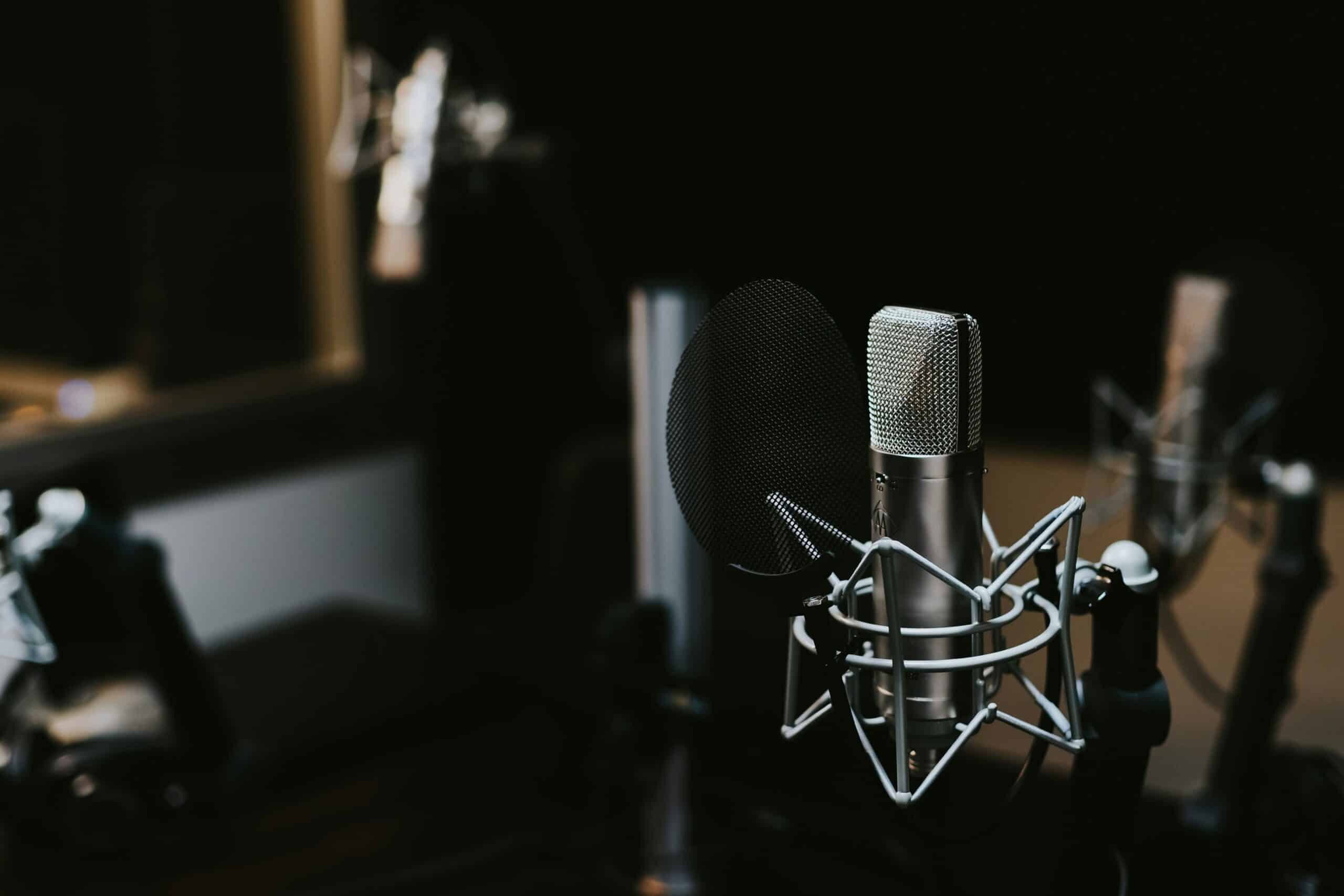On this weeks show we venture out and visit the Penguin Tours at Low Head in Tasmania. Firstly we were there is summer but make sure you rug up as this night it was extremely cold. The wind whips in of Bass Strait and the chill factor is well cold to say the least. Also make sure you wear decent walking shoes as you are walking over rocks and down close to the beach.
So on with the tour, our guide Cindy was an amazing wealth of information. You are broken up into much smaller groups and you are taken to different areas along the foreshore, but each and every grouphas an excellent and knowledgeable guide and you all get to see these furry little creatures.
Shirley Lincoln is one of the founders of Low Head penguin tours. In 1995 when the Iron Baron ran a ground, she was one of the people that caught all the birds. They took them back to the pilot station where they were washed in sunlight dishwashing detergent and once they were washed and got all the oils off the birds they had to be force fed.
In 1996, Shirley started the Low Head Penguin tours, where some nights about 200 penguins arrive on the beach at once. Shirley believes it is really important to be respectful of the penguins safety and also their environment. There are approximately 2000 to 4000 penguins in Low Head, and the most common breed is probably the blue penguin, or Eudyptula minor. Shirley says “they are generally a pretty happy bunch, and we want it to stay that way.”
Only 30cm tall and 1.1kg (2.4lbs)
Little Penguins are the smallest penguin species in the world. They are flightless seabirds who breed in colonies along the southern coast of Australia, as far north as Port Stephens in the east to Fremantle in the west. Subspecies are also found in New Zealand.
Their dense waterproof plumage is dark blue on the upper parts of the body and white on the underside. The single Australian subspecies is distinguished from the five New Zealand subspecies by having a margin of white feathers on the tail and on the rear edge of each flipper.

Some important notes from their website:
If you intend to go penguin watching, please read the fairy penguin viewing guidelines beforehand to ensure that you do not disturb these highly sensitive birds.
Left to themselves, penguins will start to leave the water at last light so that they are under the cover of darkness. This helps to protect them from predators. At this time they are very vulnerable (they regard people as potential predators) and hence are wary. If they sense a threat or are disturbed by torchlight or loud noise they stay at sea longer. This is stressful for them and can interfere with breeding, or may prevent them reaching their hungry young in the burrow. Penguins have excellent vision and easily spot movement, especially if they see you outlined against the sky.
Don’t walk through the penguin colony, as this damages the burrows. And it is best not to walk along the beach to your observation point, as this blocks the penguins’ access to their burrows.
Video cameras, without spotlights, can be used and produce better results at dusk than conventional cameras. Please do not bring any torches – we supply you with torches that do not interfere with the penguins.
Do not under any circumstances visit a colony with dogs. They are a major threat to penguins. Even if dogs are leashed their smell remains to attract others. Take food scraps away as these also attract dogs.
The cover of darkness brings the fairy penguins out of the ocean abyss and back to the beach for bedtime in their burrows. This comprehensive tour takes visitors to the nesting site to watch these wonderful waddlers. Commentary on penguin behaviour is provided, as well as maritime and colonial history of the area.

Next on the show we meet Ron and ZInette, who caretake the Lighthouse Museum, this is an educational museum where they have collected over the years many things like shells and also rubbish that get discarded into the ocean, also there are many educational boards to learn about what is in the ocean around Low Head.
Sounded each Sunday at noon, the Low Head Foghorn, at the mouth of the Tamar River, is a unique piece of our maritime history.
The Foghorn was installed in 1929 and decommissioned in 1973. It was restored in early 2000 by a group of volunteers. It is the only operational G-type diaphone in the world. The building also houses a very rare Gardner kerosene engine.
Enjoy the beautiful sea views from the headland and feel free to have a chat with the volunteers in attendance every Sunday at noon. Under ideal conditions the Foghorn can be heard approximately 30 kilometres out to sea. Hearing protection is advised.
If your visit does not coincide with the Sunday sounding, scan the QR codes on the information boards to ‘hear’ the foghorn and the Gardner engine operating.

Next up Phill chats with Jannah and they are talking about the Thallon Truck Pull.
It’s simple. Crews of six have to pull a 12-tonne prime mover over 25 meters in the fastest time. Thanks to our Major Sponsor, Brown & Hurley, the prize money up for grabs!
This year Thallon Truck Pull have offered both a Men’s Competition and a Women’s Competition with each Competition Winning Team taking home $3000.
Previous events (2021 & 2022 events) saw hundreds of spectators come from far and wide to experience the atmosphere and community spirit as they cheered on the great displays of strength and determination. This is very much a family friendly event with a Kids Zone for the little ones to keep them entertained all day. Between pulls, people can enjoy our market stalls, hot food and bar as well as the awesome music and country hospitality.

